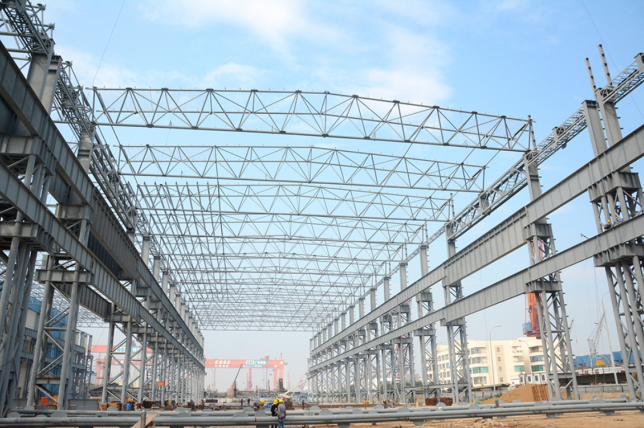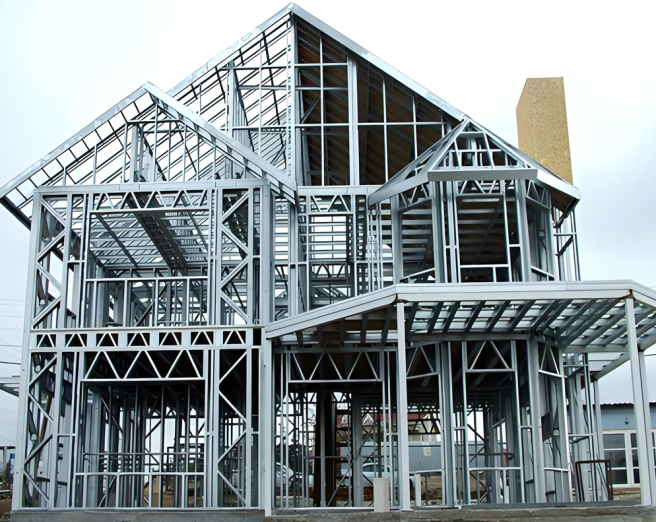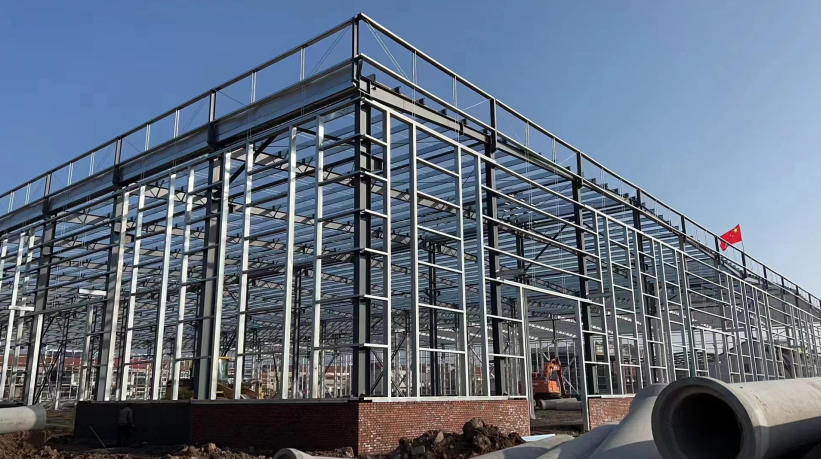Corrosion-Resistant Steel Materials Commonly Used in Steel Structures
In steel structures, in addition to strength, corrosion resistance is a critical requirement for materials. Below is an overview of common corrosion-resistant steel materials used in structural buildings.

(1) Weathering Steel
Weathering steel (e.g., Corten steel) offers superior corrosion resistance compared to standard structural steel. It contains alloying elements such as phosphorus, copper, nickel, chromium, and titanium, which form a protective oxide layer on the surface to slow corrosion. It also exhibits better low-temperature impact toughness.
Standard: GB4172-84 (Welded Weathering Steel for Structures).
(2) Hot-Dip Galvanizing
Hot-dip galvanizing involves immersing rust-free steel components into molten zinc at ~600°C (1112°F), coating the surface with a zinc layer. Minimum thickness requirements:
Thin plates (≤5mm): ≥65μm
Thick plates: ≥86μm
Advantages: Long-lasting durability (decades), industrial scalability, and consistent quality. Widely used in outdoor structures exposed to harsh environments (e.g., transmission towers, communication towers, lightweight steel roofing).
Key Considerations:
Acid cleaning and rinsing must be thorough to avoid residue, which can cause yellow water stains.
Avoid designing components with tight-fitting surfaces, as trapped acid or incomplete rinsing may compromise corrosion resistance.
Tubular structures must remain open-ended during galvanizing to prevent air expansion (which can rupture sealed ends) or uneven zinc flow.

(3) Thermal Spray Aluminum/Zinc Coating
This method provides corrosion protection comparable to hot-dip galvanizing. Process steps:
1.Sandblasting: Remove rust and roughen the surface.
2.Spraying: Melt aluminum/zinc wire using an acetylene-oxygen flame and apply it via compressed air to form a honeycomb-like coating (80–100μm thick).
3.Sealing: Fill pores with epoxy or chloroprene rubber paint to create a composite layer.
Advantages:
Suitable for large or irregularly shaped components (e.g., ship locks at the Three Gorges Dam).
Localized heat application minimizes thermal distortion.
Limitations:
Not applicable to inner surfaces of tubular structures (ends must be sealed).
Labor-intensive and quality-dependent on operator skill.

(4) Protective Coatings
While less durable than galvanizing or thermal spraying (except advanced fluorocarbon coatings, which can last 50 years), coatings are cost-effective for indoor or maintainable outdoor structures.
Process:
1.Surface Preparation:
High-quality coatings require sandblasting to remove rust and expose bare metal.
On-site coatings may use manual rust removal.
2.Coating Application:
Primer: High adhesion, rough texture, rich in pigments.
Topcoat: Glossy finish, protects against weathering.
Ensure compatibility between primer and topcoat.
Application Conditions:
Temperature: 5–38°C (41–100°F)
Humidity: ≤85% relative humidity
Avoid dust, condensation, and rain within 4 hours of application.
Coating Thickness:
Outdoor: 150μm (±25μm)
Indoor: 125μm (±25μm)
Harsh environments (e.g., coastal areas): 200–220μm
(5) Cathodic Protection
A sacrificial anode (e.g., zinc or magnesium) is attached to the steel structure to corrode preferentially. Commonly used for submerged or underground structures.



